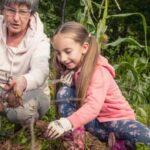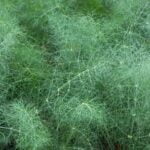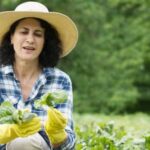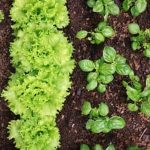Are you looking to start your own vegetable garden in the Southeast? Look no further, as this article serves as a comprehensive guide to vegetable gardening in the southeast. Whether you are a beginner or an experienced gardener, this article will provide all the essential information you need to successfully grow your own vegetables in this region.
The southeastern region of the United States offers a unique set of challenges and opportunities for vegetable gardening. From the hot and humid climate to the specific soil considerations, there are many factors to consider when planning and maintaining a vegetable garden in this area.
In this introductory section, we will provide an overview of what to expect in the following sections, where we will delve into the best vegetables to grow, climate and soil considerations, tips for starting a garden, pest and disease management, watering and fertilizing techniques, harvesting and storing vegetables, as well as community and local resources available for southeast vegetable gardeners. So let’s get started with everything you need to know about successful vegetable gardening in the Southeast.
Best Vegetables to Grow in the Southeast
The Southeast region of the United States offers a great climate and conditions for growing a wide variety of vegetables. When planning your vegetable garden in the Southeast, it is important to choose vegetables that are well-suited to the climate and soil of the region. Some of the best vegetables to grow in the Southeast include tomatoes, peppers, cucumbers, squash, sweet potatoes, okra, and various types of beans.
One of the most popular vegetables to grow in the Southeast is tomatoes. With proper care and attention, tomato plants can yield an abundant crop of juicy and flavorful tomatoes throughout the growing season. Bell peppers and hot peppers also thrive in the warm and sunny climate of the Southeast. These versatile vegetables can be used in a wide range of recipes and are a great addition to any vegetable garden.
Cucumbers are another excellent choice for Southeast vegetable gardens. They require plenty of sunlight and consistently moist soil to produce an ample harvest. Squash, including zucchini and yellow squash, are also well-suited to the Southeast’s warm weather and fertile soil. These fast-growing vegetables are prolific producers and can provide a bountiful harvest for months. Lastly, sweet potatoes are a staple crop in Southern cuisine and are relatively easy to grow in the Southeast’s climate.
| Vegetable | Best Growing Conditions |
|---|---|
| Tomatoes | Well-drained soil, full sun |
| Peppers | Warm temperatures, fertile soil |
| Cucumbers | Plenty of sunlight, consistently moist soil |
Climate and Soil Considerations for Southeast Vegetable Gardening
When it comes to vegetable gardening in the Southeast, understanding the unique climate and soil considerations is crucial for a successful harvest. The Southeast region experiences hot and humid summers, mild winters, and a substantial amount of rainfall throughout the year. This type of climate can be both beneficial and challenging for growing vegetables, so it’s important to choose the right varieties and implement proper soil management practices.
The first step in addressing climate and soil considerations for vegetable gardening in the Southeast is to select vegetables that are well-suited for the region. Some of the best vegetables to grow in this area include tomatoes, peppers, okra, sweet potatoes, collard greens, and cucumbers. These vegetables thrive in the warm temperatures of the Southeast and are generally resistant to common pests and diseases found in this region.
In addition to selecting the right vegetables, it’s important to consider soil quality when starting a vegetable garden in the Southeast. Many areas in this region have acidic clay soils that may need amendments such as lime or compost to improve drainage and nutrient content. Conducting a soil test before planting can provide valuable information about your soil’s pH level and nutrient deficiencies, allowing you to make informed decisions about soil amendments and fertilization.
Climate and Soil Considerations for Southeast Vegetable Gardening
| Vegetables | Recommended Varieties |
|---|---|
| Tomatoes | Roma, Celebrity, Better Boy |
| Peppers | Jalapeno, Bell Pepper, Banana Pepper |
| Cucumbers | Bush Pickle,Cucumber Spacemaster,Yard Long Cucumber |
Tips for Starting a Vegetable Garden in the Southeast
Starting a vegetable garden in the Southeast can be an enjoyable and rewarding experience. Whether you are a beginner or an experienced gardener, there are some important tips to keep in mind to ensure a successful growing season. From selecting the right location to preparing the soil, here are some essential tips for starting a vegetable garden in the Southeast.
Selecting the Right Location
The first step in starting a vegetable garden in the Southeast is to select the right location. Most vegetables require at least 6-8 hours of sunlight per day, so it is important to choose a spot in your yard that receives adequate sunlight. Additionally, consider factors such as access to water and protection from strong winds when selecting your garden location.
Preparing the Soil
Soil preparation is crucial for successful vegetable gardening in the Southeast. Conduct a soil test to determine the pH level and nutrient content of your soil. Most vegetables prefer slightly acidic soil with a pH range of 6.0-7.0. It may be necessary to amend your soil with organic matter such as compost or aged manure to improve its fertility and structure.
Choosing the Right Vegetables
When starting a vegetable garden in the Southeast, it is important to select vegetables that are well-suited to the climate and growing conditions of the region. Some popular vegetables that thrive in the Southeast include tomatoes, peppers, squash, cucumbers, okra, and sweet potatoes. Consider planting varieties that are known for their resistance to common pests and diseases in the region.
By following these tips for starting a vegetable garden in the Southeast, you can set yourself up for a successful growing season filled with an abundance of fresh, homegrown produce. Remember to plan ahead, stay attentive to your plant’s needs and feel free do some research about other resources available on this
Pests and Diseases to Watch Out for in Southeast Vegetable Gardens
One of the biggest challenges that vegetable gardeners in the Southeast face is dealing with pests and diseases that can wreak havoc on their crops. There are a variety of insects, animals, and plant diseases that can threaten the success of your garden if not properly managed. However, with the right knowledge and proactive measures, you can minimize the impact of these threats and protect your vegetable plants.
In the Southeast, some common pests that vegetable gardeners have to watch out for include aphids, caterpillars, beetles, and squash bugs. These insects can damage leaves, stems, and fruits of different vegetables, leading to reduced harvest yields if left unchecked. Additionally, critters like rabbits and deer can also cause damage by eating or trampling on vegetable plants. It’s important to identify these pests early on and take appropriate actions to control their populations.
Aside from pests, vegetable gardeners in the Southeast also have to be vigilant against diseases such as powdery mildew, blossom end rot, blight, and root rot. These diseases can spread rapidly in warm and humid conditions typically experienced in the region. Proper sanitation practices, including regular removal of diseased plant parts and proper composting techniques, are essential in managing these diseases effectively.
To mitigate the impact of pests and diseases on your Southeast vegetable garden, it’s crucial to implement integrated pest management (IPM) strategies. This approach involves using a combination of cultural practices (such as crop rotation), biological controls (like introducing natural predators), and minimal pesticide applications to maintain a healthy balance in your garden ecosystem.
By staying informed about potential threats and actively monitoring your plants for signs of trouble, you can protect your vegetable crops and ensure a successful harvest.
Remember that prevention is key when it comes to managing pests and diseases in your Southeast vegetable garden. By practicing good gardening habits such as maintaining proper plant spacing, providing adequate air circulation around plants, regularly inspecting for signs of trouble, and promptly addressing any issues that arise, you can keep your garden healthy and productive throughout the growing season.
Watering and Fertilizing Your Southeast Vegetable Garden
When it comes to vegetable gardening in the southeast, proper watering and fertilizing are essential for a successful harvest. The hot and humid climate of the region can present challenges for maintaining the right moisture levels, and the soil may need additional nutrients to support healthy plant growth. In this section, we will explore the best watering practices and fertilization methods for your southeast vegetable garden.
Watering Your Southeast Vegetable Garden
One of the most important factors to consider when watering your southeast vegetable garden is timing. During the hot summer months, it’s crucial to water early in the morning or late in the afternoon to minimize evaporation and ensure that plants have adequate moisture throughout the day. Additionally, using a soaker hose or drip irrigation system can help deliver water directly to the roots, reducing waste and promoting healthier growth.
Fertilizing Your Southeast Vegetable Garden
In the southeastern region, soil fertility can vary widely, so it’s important to test your soil before applying any fertilizers. Once you have a better understanding of your soil’s nutrient levels, you can choose a fertilizer that will provide the necessary elements for optimal plant growth. Organic options such as compost, manure, and fish emulsion are popular choices for southeast vegetable gardens, as they not only provide essential nutrients but also improve soil structure and microbial activity.
Additional Considerations
In addition to regular watering and fertilizing, it’s important to monitor your plants for signs of stress or nutrient deficiencies. Adjusting your watering schedule or choosing a different type of fertilizer may be necessary based on specific crop needs or environmental conditions. By staying attentive to your garden’s moisture and nutrient requirements, you can maximize your chances of a bountiful harvest in the southeast.
By implementing these best practices for watering and fertilizing your southeast vegetable garden, you can ensure that your plants have everything they need to thrive in this unique climate. With proper care and attention to detail, you’ll be well on your way to enjoying a successful growing season filled with delicious homegrown produce.
Harvesting and Storing Vegetables in the Southeast
When it comes to harvesting your vegetables in the southeast, timing is key. Different vegetables have different harvest times, so it’s important to know when each vegetable is ready to be picked. Some common vegetables and their ideal harvest times in the southeast include:
- Tomatoes: When they are fully colored but still firm
- Okra: When they are about 3 inches long
- Zucchini: When they are about 6-8 inches long
Once you’ve harvested your vegetables, proper storage is essential to maintain their freshness. Some vegetables can be stored at room temperature, while others require refrigeration. Here are some guidelines for storing your harvested vegetables:
- Tomatoes: Store at room temperature until ripe, then refrigerate
- Okra: Refrigerate in a ventilated plastic bag
- Zucchini: Store in the refrigerator for up to one week
In addition to proper storage, it’s important to handle your harvested vegetables with care to avoid bruising or damage. Using baskets or trays lined with a soft cloth can help protect your vegetables during harvesting and storage.
For those looking to preserve their vegetable harvests for later use, there are various methods such as canning, freezing, and pickling that work well in the southeast’s hot and humid climate. These methods allow you to enjoy your homegrown produce throughout the year.
Community and Local Resources for Southeast Vegetable Gardeners
In conclusion, vegetable gardening in the Southeast can be a rewarding and fruitful experience for anyone looking to grow their own produce. By following the tips and guidelines outlined in this article, gardeners can successfully navigate the unique climate and soil considerations of the region to grow a bountiful harvest. From deciding which vegetables to grow, to understanding the pests and diseases that may affect their garden, this guide provides valuable information for aspiring Southeast vegetable gardeners.
One of the most important factors to consider when starting a vegetable garden in the Southeast is access to community and local resources. Whether it’s joining a community gardening club, seeking advice from local agricultural extension offices, or participating in farmer’s markets, there are numerous opportunities to connect with other gardeners and experts in the area. These resources not only provide valuable knowledge but also foster a sense of community and support among Southeast vegetable gardeners.
As more people become interested in growing their own food, the availability of resources for Southeast vegetable gardening continues to expand. From online forums and social media groups to classes and workshops offered by local nurseries, these resources serve as valuable tools for both novice and experienced gardeners alike. By taking advantage of these community and local resources, Southeast vegetable gardeners can further enhance their skills while creating a network of support within their region.
Frequently Asked Questions
What Vegetables Grow in the Southeast?
The Southeast is known for its hot and humid climate, making it ideal for growing vegetables like okra, sweet potatoes, collard greens, tomatoes, bell peppers, and cucumbers. These crops thrive in the region’s warm weather and fertile soil.
What Is a Good Layout for a Vegetable Garden?
A good layout for a vegetable garden includes organizing plants by height to ensure they all receive adequate sunlight. It’s also important to group together vegetables with similar water and sunlight needs and to leave enough space between rows for easy maintenance and harvesting.
How Do I Map My Vegetable Garden?
Mapping your vegetable garden involves sketching out the area and deciding where each crop will be planted based on their sunlight requirements, growth habits, and water needs. This ensures that your garden is organized in a way that promotes healthy plant growth and ease of care.

If you’re looking to get into vegetable gardening, or are just looking for some tips on how to make your current garden better, then you’ve come to the right place! My name is Ethel and I have been gardening for years. In this blog, I’m going to share with you some of my best tips on how to create a successful vegetable garden.





